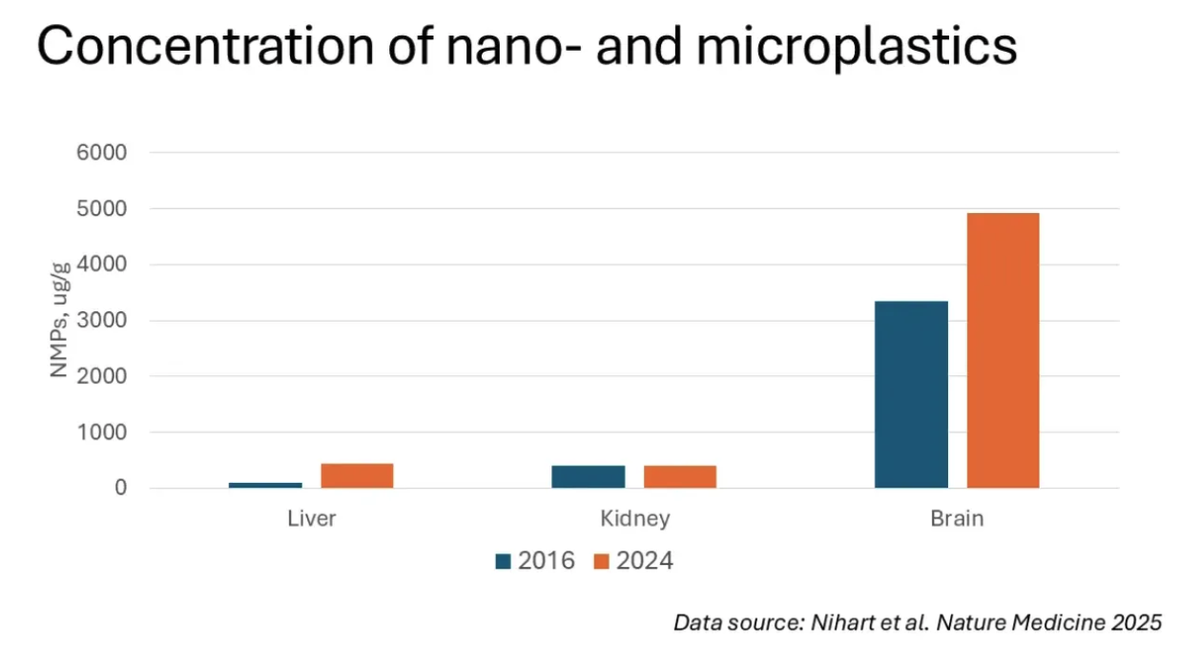The Green Page:

Microplastics: A Quick Beginner’s Guide:
There’s a Sandwich Bag of Plastic In Your Brain.
A few weeks ago, I came across a story that made me stop drinking water from plastic bottles. (If you’d rather live in blissful ignorance about your plastic usage, maybe don’t read any further.) F. Perry Wilson, MD, associate professor of medicine and public health at Yale, covered a recent study on how nanoplastics — specks of plastic as small as 1 nanometer in width, or as long as a fingernail grows in one second — accumulate in the human brain.
Researchers at the University of New Mexico collected tissue samples from around 30 recently deceased organ donors around the country. They examined each sample under a microscope, looking for microplastics — and found 5x more accumulated plastics in brain tissue than in liver and kidney tissue (where you’d expected to find them):
Blood vessels in your brain are lined with a highly selective membrane (the “blood-brain barrier”). It’s designed to prevent toxins from entering the brain, but nanoplastics are too small for it to detect… so they easily pass through. If you were to accumulate all the tiny flecks of nanoplastics in the brain of one of these subjects, you’d have a sandwich bag’s worth of plastic. Here’s one speck:
(That white dot above is a nanoplastic, likely a tiny bit of polyethylene, that has seeped through the blood-brain barrier into someone’s cortex.)
As a companion piece, writer Derek Flanzraich explains how microplastics end up in our blood in the first place. Essentially, we ingest bits of plastic daily. We also inhale them (via household dust or offgassed fumes) and absorb them (via some cosmetics and skincare products). Plastic is everywhere; it’s inescapable.
The giant unanswered question here:
What exactly are microplastics doing to our bodies? Some studies have found they can cause inflammation, but results are mixed. Still, Wilson isn’t taking chances. Given that “those who drink most of their water via plastic bottles ingest an extra 90,000 particles of microplastics a year, compared to 4,000 [for those] who consume only tap water,” he’s trying to nix his plastic bottle usage going forward.
Short of systemic solutions like limiting the use of plastics in manufacturing, if you (like me) are mildly risk-averse and want to reduce your personal intake, both writers recommend…
Drink water from glass instead of plastic.
Use ceramic or stainless steel dishware.
Store food in glass or stainless steel instead of Tupperware.
Don’t microwave food in plastic containers (apparently, this can create billions of microplastics in just a few seconds)
If you want to go even deeper, I recommend bookmarking Flanzraich’s full story.


